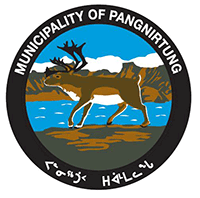ICSP Toolkit
About Pangnirtung

Pangnirtung, 50 km south of the Arctic Circle, is situated on the broad reaches of an old beach below the mountains of the Pangnirtung fiord, on the northern side of Cumberland Sound at N66 10' W65 44'.
Pangnirtung has a long history of Whaling in Cumberland Sound where commercial whaling started in 1820. In 1838 a Scottish whaler named William Penny along with an Inuk traveling guide rediscovered Cumberland Sound. As the sound was rich in Bowhead whales, Inuit way of life began to change when whaling was starting. By the late 1850's, many Inuit left their camps to work at the whaling stations in Nuvuyen (located on the southern coast) and to Kekerten Island (located on the northern coast).
Then in the mid 1860's, Cumberland Sound was showing signs of being "fished out". By 1870 Nuvuyen was in ruins and hardly any more ships came to hunt whales and the Inuit returned to life in camps scattered throughout the sound.
In 1921 the Hudson Bay Company built a trading post in Pangnirtung which then began attracting the Inuit. Two years later the Royal Canadian Mounted Police (RCMP) detachment was built. In 1929, St. Luke's Mission Hospital was established. Although by this time, there were more than few Inuit living in Pangnirtung, it was in 1962 that most of the Inuit in Cumberland Sound moved to Pangnirtung when a distemper epidemic killed most of their dogs. That same year the Federal Government established an administrative office and sent its first teacher to Pangnirtung.
On April 1, 1973, Pangnirtung was incorporated as a Hamlet. The mayor and councillors are elected by the community who look after the administration of the community which includes providing municipal services. There are various sub committees under the Hamlet Council such as a Health committee, Safety Issues committee and Youth committee.
Population: 1,645

